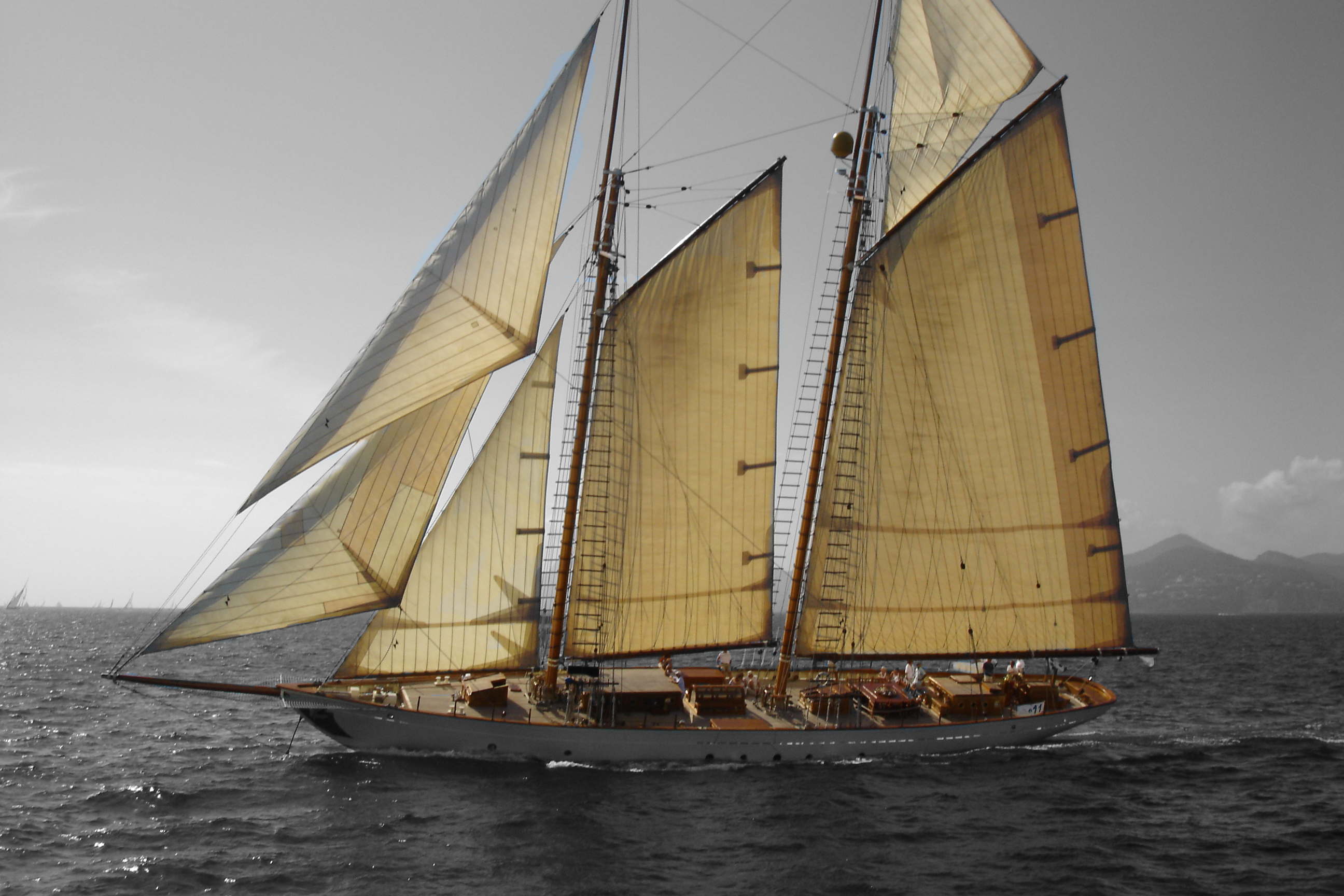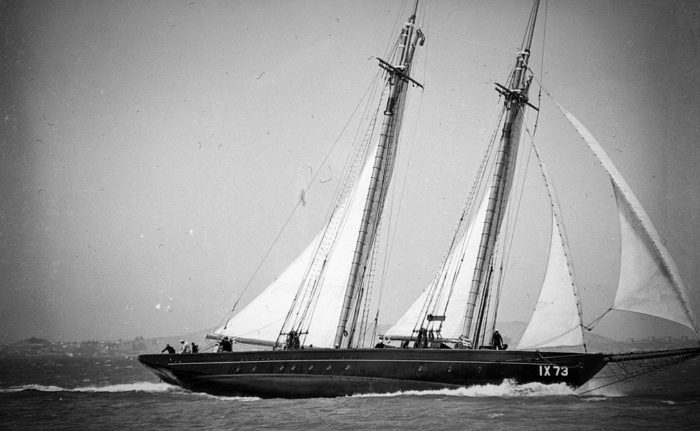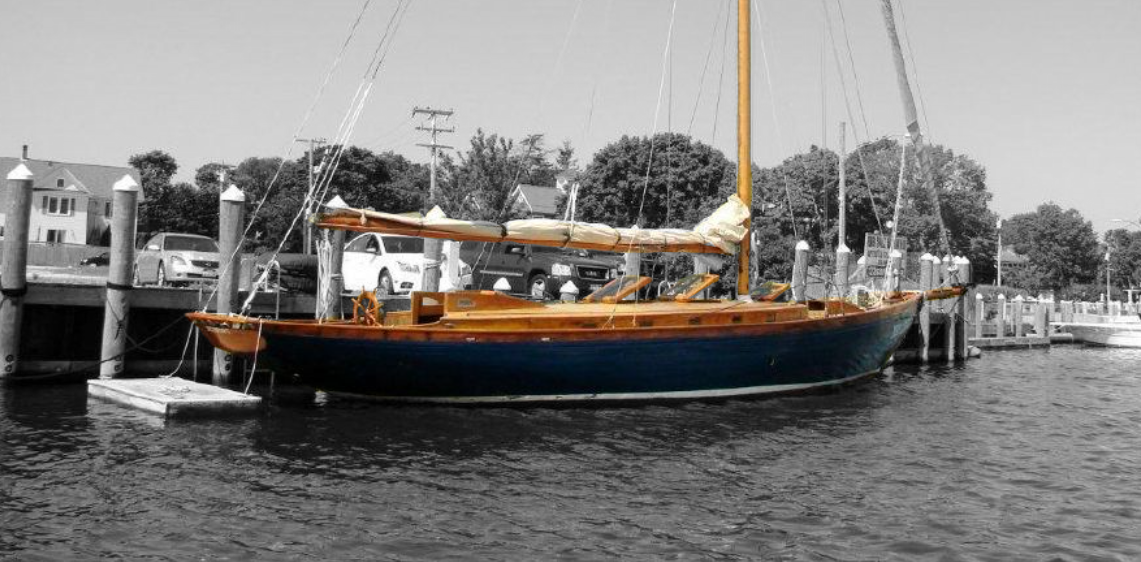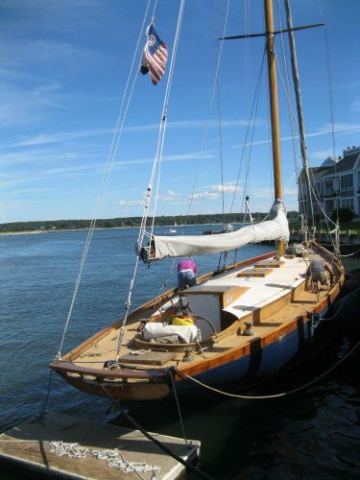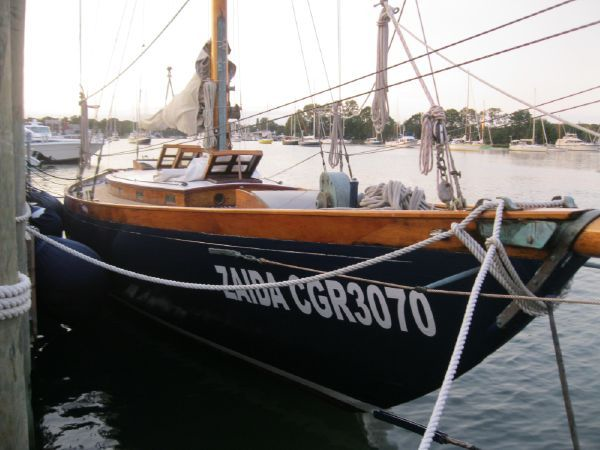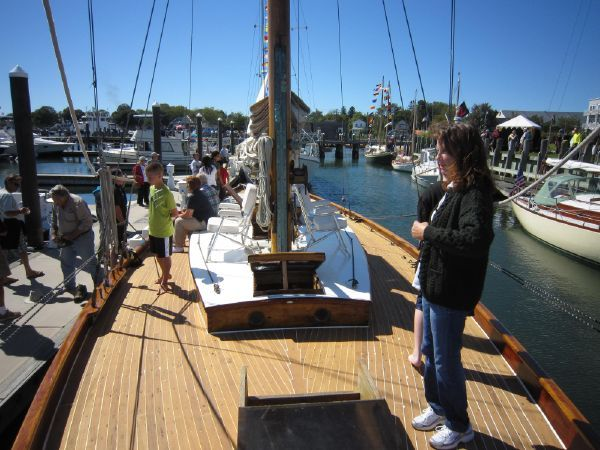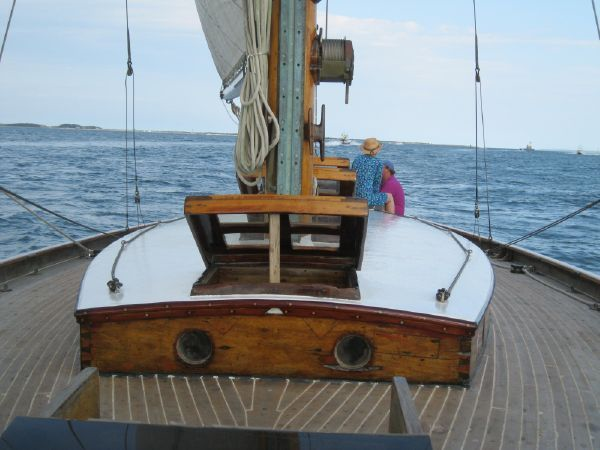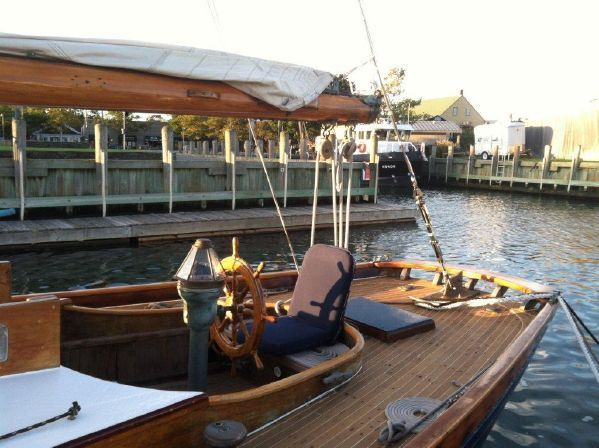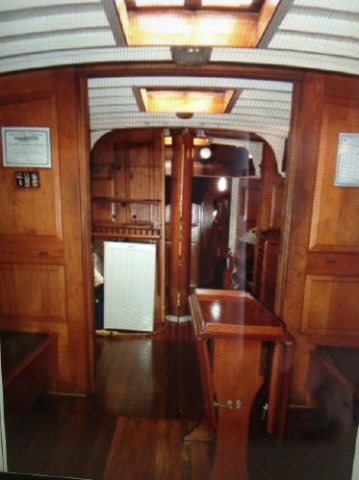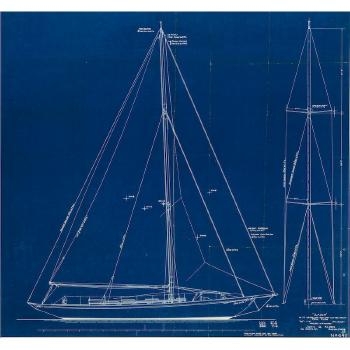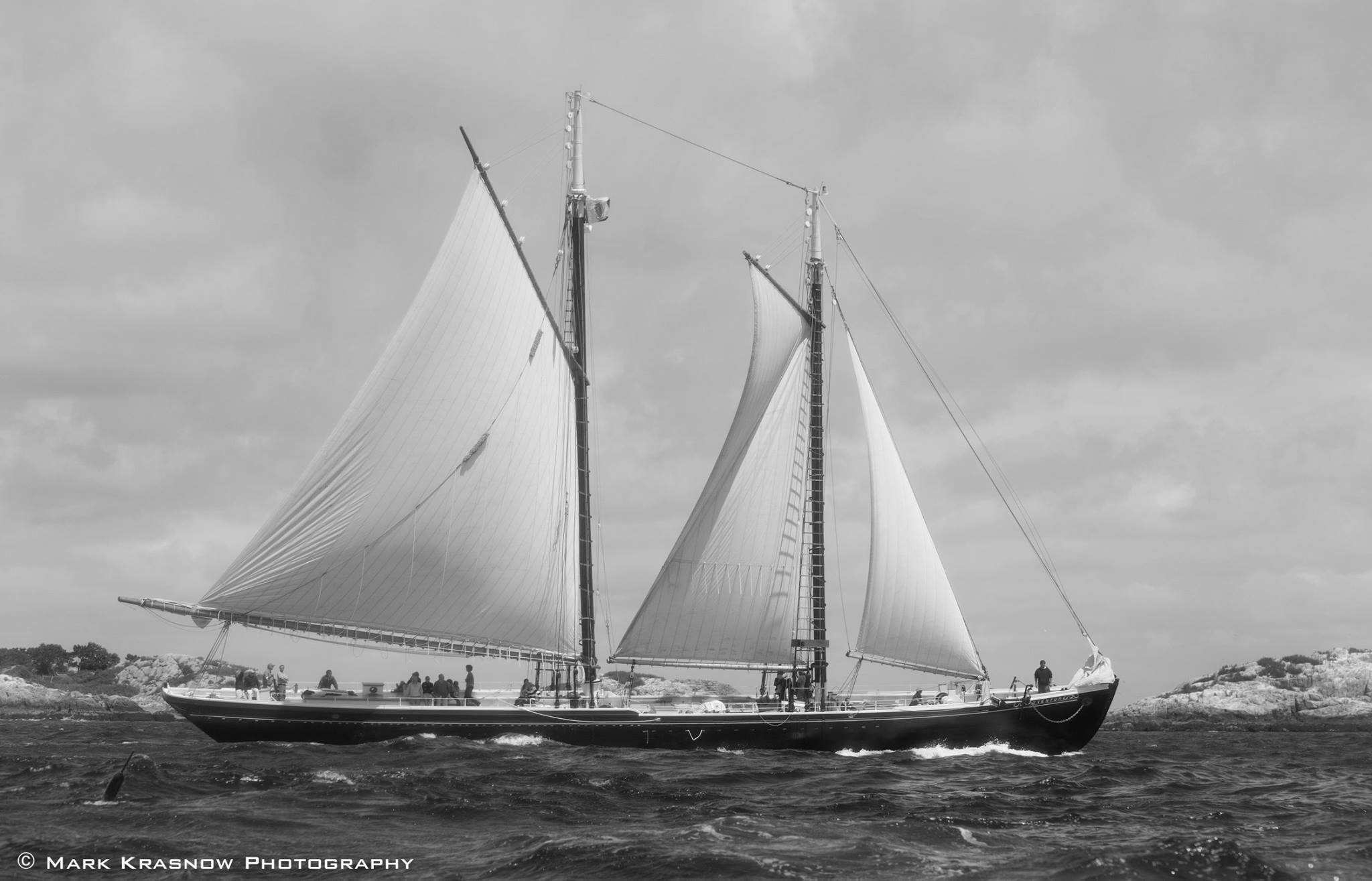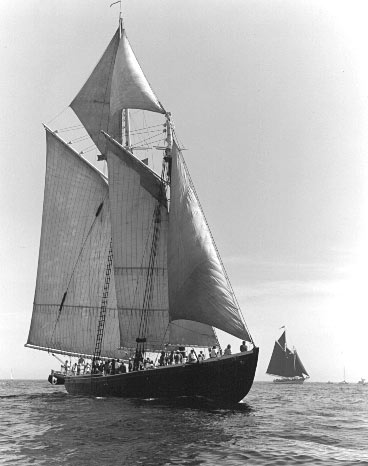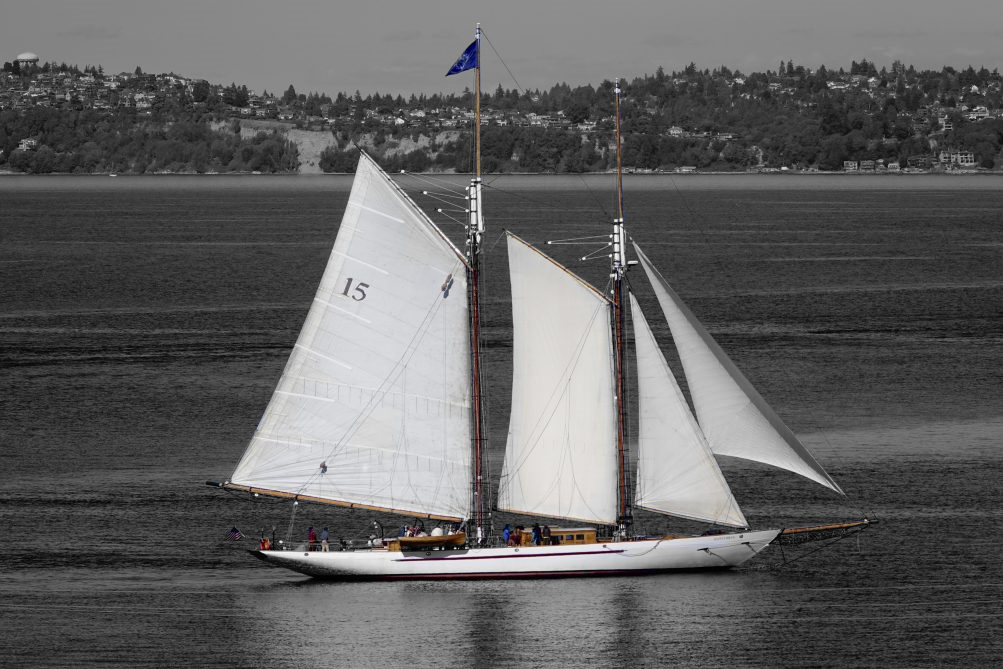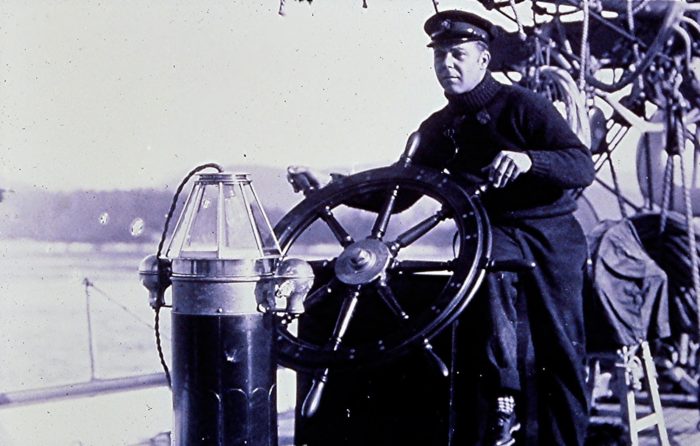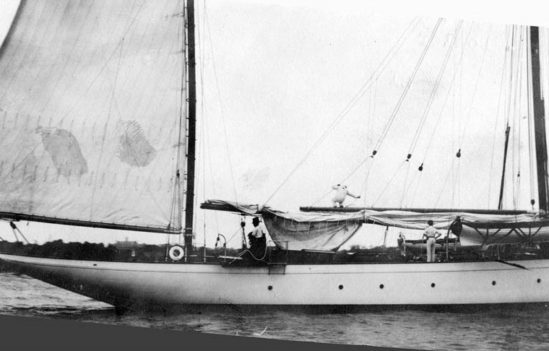
Wartime designation: Zahma (IX-63)
Type: Auxiliary Ketch
Ex; Thespian
LOA: 93′ 0″ / 28.00m – LWL: – Beam: 20′ 7″ / 6.27m – Draft: 7′ 9″ / (2.36m – Displacement: 75 tons – Sail Area: – Original Owner: John H. Cromwell, Cold Spring Harbor, Long Island, New York. – Original Name: – Year Launched: 1915 – Designed by: Bowdoin B. Crowninshield – Built by: George Lawley & Son, Neponset, Massachusetts – Hull Material: Wood – In service: 26 February 1942 – Out of service: 13 April 1943 – Complement: 6 officers and men
Historical:
A wooden-hulled ketch with an auxiliary engine, she was designed by Bowdoin B. Crowninshield and completed in 1915 at Neponset, Massachusetts, by George Lawley & Son, for John H. Cromwell of Cold Spring Harbor, Long Island, New York. Inspected by the Navy at the entry of the United States into World War I for possible service as a patrol craft, the vessel was rejected as “unsuitable for naval use.”
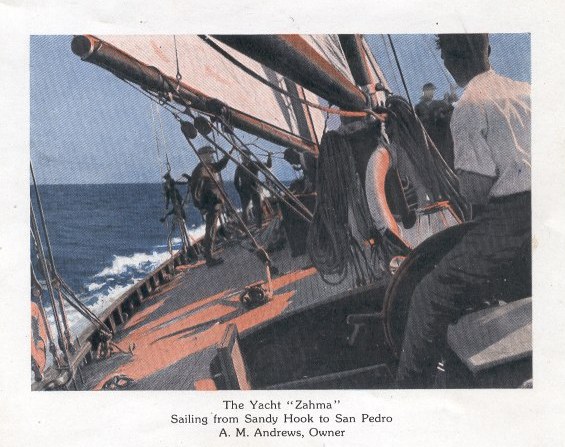
A quarter of a century later, the exigencies of war changed the Navy’s evaluation of the graceful craft, as she was again inspected, this time at the 11th Naval District, in early 1942. Acquired by the Port Director of San Diego, California, from R. J. Rheem on 13 February, Zahma was placed in service on 26 February 1942. Classified as an unclassified miscellaneous vessel and designated IX-63, Zahma was based at San Diego and operated as a local patrol craft into the spring of 1943. Placed out of service on 13 April 1943, her name was struck from the Naval Vessel Register on 18 July 1944.
ALTADENAN BUYS FINE YACHT
A. M. Andrews Bringing Big Pleasure Craft to This Coast
TO MAKE CRUISE
IN SOUTH SEAS
California Hotel Company
Official Predicts Big
Pasadena Season
The Pasadena Star, September 7, 1920
With the news that he has purchased one of the finest yachts on the Atlantic Coast which is now on its way here, A. M. Andrews of Altadena, inter-nationally known banker, vice-president and one of the chief owners of the California Hotel Company, returned home today after a summer passed in the East. Mr. Andrews will be here but a day or two, and will then go to San Diego to greet his family, which is staying there, and welcome his new yacht, which is expected at that port shortly.
Since Altadena is not a deep sea harbor, it cannot be the home port of the beautiful new yacht, which is named the Zahma, but the nearest harbor, that of San Pedro, will shelter the big new boat except when it is on cruises. One of those cruises, to be undertaken early next year, will be an extensive tour of the South Seas, bearing the Andrews family and friends. That voyage probably will last six or eight months.
Ideal Yachting Climate
“California and the Pacific Coast have the ideal summer yachting climate,” declared Mr. Andrews today. “It was for that reason that I am having my new yacht brought to this coast. Cruising will be a greater pleasure here than along the Atlantic.”
Mr. Andrews is greatly pleased with the record made by his new boat on the trip from New York to the Panama Canal, which it negotiated in thirteen days and twenty hours, setting a new record for yachts on that voyage. He expects a similar new record to be established by the Zahma on its run up the West Coast.
The new Andrews yacht is 95 feet long and 21 feet beam. It is ketch-rigged, with power equipment also, and will be, with the possible exception of Capt. John Barneston’s yacht at San Francisto, the largest pleasure craft in California. It has five staterooms, is palatially finished and a beautiful sea home.
Mr. Andrews already was the owner of a fine yacht in the East, which he now intends to sell. In that craft he attended the international yacht races off Sandy Hook.
Business conditions, none too good in the East in early summer, are improving rapidly, Mr. Andrews reports, and his opinion bears the stamp of authority through the fact that his banking house is one of the largest investment establishments of New York and Chicago.
Many Visitors Coming
“California will have the greatest influx of visitors in its history,” Mr. Andrews said today. “This is not a merely empty prediction, it is a statement of fact. I look for the biggest hotel season Pasadena has ever known. As I just arrived I’ve had no opportunity to check over hotel conditions here, but am gratified to hear of how good the summer season has been.”
Mr. Andrews plans to remain in California only until about October 1, when business will again necessitate his return to the East. He will, however, be back early in the winter. Mrs. Andrews accompanied her husband on his summer trip East, but their children were left at San Diego.
Marylanders at Home and Abroad
California Life Magazine, November 6, 1920
With a brilliant world-breaking record behind her, the palatial yacht, Zahma, owned by Mr. A. M. Andrews, vice president of the California Hotel Company, recently sailed into Pacific waters via the Panama Canal, her time from New York harbor in Crystobal this summer being thirteen days and twenty hours.
Just now she is resting from her labors and is being thoroughly overhauled, as Mr. and Mrs. Andrews expect, shortly, to use her in cruising the Mexican coast.
The Zahma, ketch rigged, is ninety-four feet in length and, beside her crew, sleeps eight people. She is finished in all the latest and most luxurious appointments, and combines the beauties of a sailing vessel with the convenience of twin engines.
The Andrews, who have a beautiful 84-foot gasoline boat on the east coast, the Sachem, plan to keep the Zahma for western waters entirely, as the yachtsman firmly believes the west coast is only just beginning to be recognized, its ideal summer and winter climate proving a magnet for cruising.
Several short cruises were made on the Zahma before she went into dry dock, Mr. Andrews himself taking the wheel in a run to San Francisco and return. Among his guests on this occasion were Mr. Garfield Jones of Pasadena and Mr. George Kirkwood of San Rafael Heights. Mr. Charles Hewitt of the Maryland was a delighted guest on a flying voyage to Catalina Island and back.
Just at present Mr. Andrews is in the east, but his winsome wife and two lovely kiddies, after several weeks at Coronado, are once again at their luxurious home in Altadena.
WWII service
Acquired by the Port Director of San Diego, California, from R. J. Rheem on 13 February, Zahma was placed in service on 26 February 1942. Classified as an unclassified miscellaneous vessel and designated IX-63, Zahma was based at San Diego and operated as a local patrol craft into the spring of 1943. Placed out of service on 13 April 1943, her name was struck from the Naval Vessel Register on 18 July 1944.
Provenance (The Wall of Remembrance – The Owners, Notable Guest, and Reunion Information):
Ex; Thespian
Owner/Guardian: (1915-1919) – John H. Cromwell, Cold Spring Harbor, Long Island, New York.
Owner/Guardian: (1919-1920) – F. I. Jenckes of Providence, R. I.
Owner/Guardian: (1920-1929) – Archie M. Andrews, Altadena (inter-nationally known banker, vice-president and one of the chief owners of the California Hotel Company.)
Owner/Guardian: (1929) – Carl Schilling, Beverly Hills, California. (California Yacht Club)
Owner/Guardian: (1934,1938) – Donald Crisps and Jane Murfin
Owner/Guardian: (1941) – R. S. Rheem, Orinda, Calif (Newport Harbor Yacht Club)
Owner/Guardian: (1942-1944) Eleventh Naval District, Acquired by the Port Director of San Diego, Calif., from R. J. Rheem on 13 February 1942, Zahma was placed in service on 26 February 1942. Classified as a miscellaneous axiliary and designated IX-63, she was based at San Diego and operated as a local patrol craft into the spring of 1943. Placed out of service on 13 April 1943, Zahma was stricken from the Navy List on 18 July 1944.
Owner/Guardian: (1960) – Waldo Waterman
